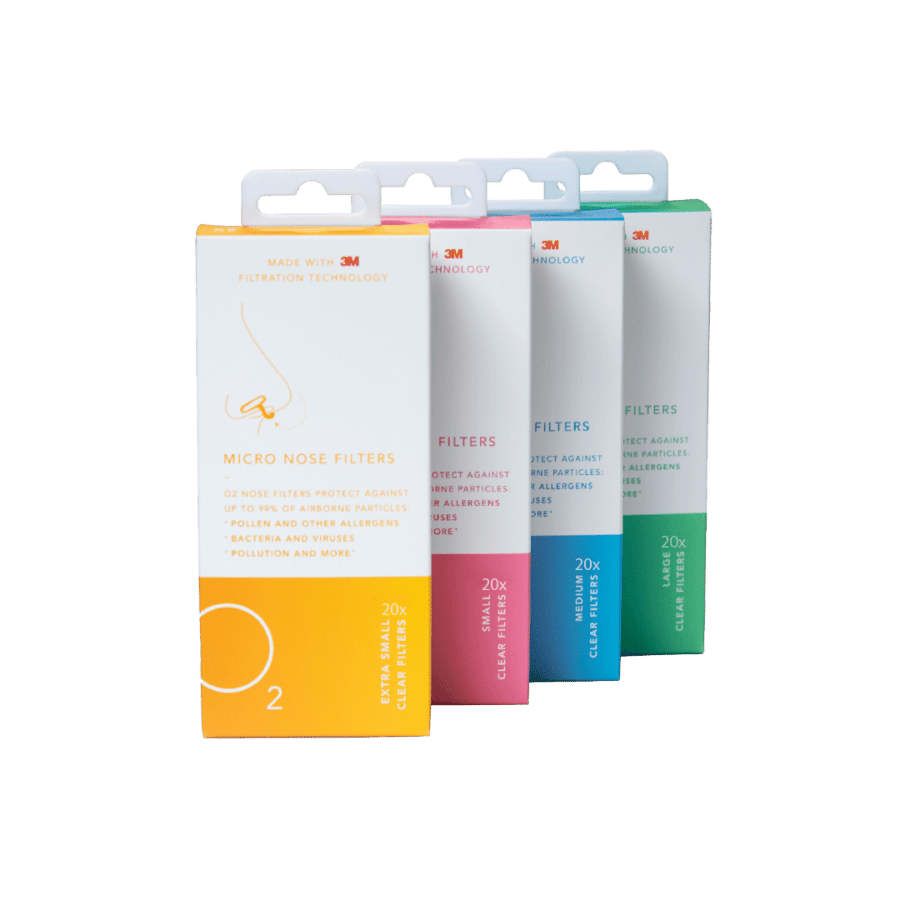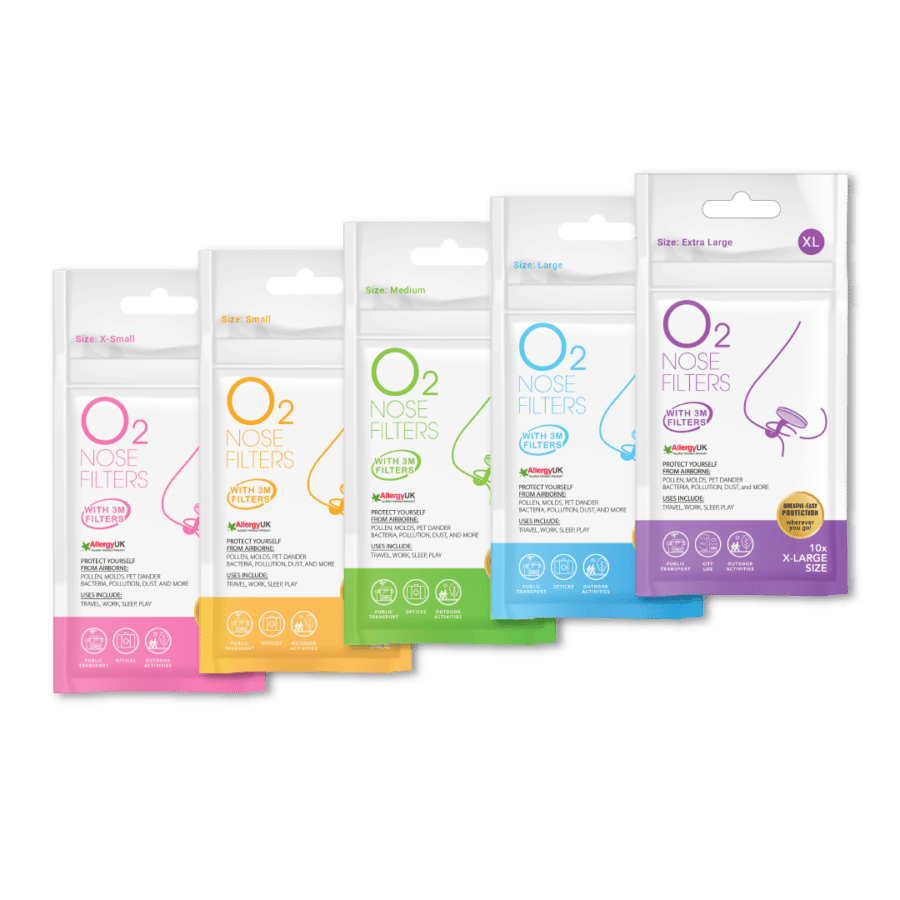While as much as 30% of adults have season allergies, and an estimated 1-billion Americans suffer from colds each year, it may be difficult to differentiate one from the other as both entail similar symptoms. Many people may ask why it’s so important to know whether they have a cold or allergies, and in response we highlight that treatment methods differ depending on what exactly you’re experiencing. Keep reading to learn how to tell the difference between a cold and allergies, treatment methods, and how to ultimately defend your nose from inhaling harmful particulate matter.
Signs of a Cold
Colds are caused by several contagious viruses which are spread from person-to-person through sneezing, coughing, shaking hands, or touching other contaminated surfaces. When your body launches its counterattack to eliminate the harmful germs, this response brings on the classic symptoms that are most associate the common cold. Symptoms related with colds are:
- A Runny Nose
- Congestion
- A Cough
- Sneezing
- A Sore Throat
- Thick Colored Mucus
- A Headache
- Body Aches
- A Low-Grade Fever
After a few weeks of experiencing these symptoms, most people’s immune system should be able to fight off all the harmful bacteria and you’ll feel back to normal. Uniquely, colds can be caught during any time of the year, whereas allergies specifically happen during certain seasons and locations.
Signs of Allergies
Unlike colds, allergies aren’t contagious, although some people have an inherent tendency to get them during certain times of the year. During specific seasons when pollen, dust, dander, and other seemingly harmless particulate matter is on the rise, many people experience uncomfortable symptoms upon inhaling such particles. When this happens, the sufferer’s body naturally releases a chemical called histamine which in effect swells the nasal passageways. Symptoms related with allergies are:
- Clear Watery Mucus
- Itchy Watery Eyes
- Sneezing
While less symptoms are associated with allergies, in comparison to colds, allergies generally stick around longer than a mere few weeks. Fortunately, those suffering from allergies usually don’t experience a sore throat, body aches, a fever, or many of the other symptoms that the common cold can bring on. Additionally, while itchy eyes are generally not associated with colds, allergy sufferers tend to have clear watery mucus while cold sufferers tend to have thick colored mucus.
Allergy and Cold Treatments
For those experiencing a cold, it’s important to both get lots of sleep and to lower your body temperature with a cool shower and some aspirin. To prevent catching a cold, beyond just staying away from those with a current cold, be sure to wash your hands often and thoroughly. Avoiding allergies is a bit more difficult as each individual person suffers from different allergens. It’s important to pinpoint which exact particles trigger your allergies and avoid those triggers as much as possible.
Defend Your Nose from Harmful Particles
O2 Nose Filters has been proven in controlled studies to help protect wearers from inhaling harmful airborne particles such as pollen, bacteria, viruses, dust, and other pollutants. Independent laboratory tests demonstrate that our Advanced Electret Media in O2 Nose Filters block 90% of particulates at PM10 and 65% of particulates at PM2.5. Additionally, O2 Nose Filters are comfortable to wear due to their latex-free design and medical-grade Thermoplastic Elastomer (TPE) materials.
O2 Nose Filters provides inexpensive and effective security to protect people from harmful airborne diseases and excessive mucus. While our nasal passageways try their best when it comes to filtering harmful particulate matter, they aren’t perfect. That’s why O2 Nose Filters are such an effective solution when it comes to improving our mental and physical health. Nose filters are a discreet, effective option to protect against airborne viruses and bacteria. The O2 Nose Filter uses our patented AEM™ electrostatic technology to capture allergens, viruses, and other particulates, making them a valuable tool for anyone who wants to drastically limit the pollutants and pollens they breathe in daily, as well as eliminate the presence of excessive mucus.
-
O2 Nose Filters Sizing Pack$3.95
-
O2 Nose Filters | 20 Pack$18.95
-
O2 Nose Filters | 10 Pack$10.95 — or subscribe and save 10%






